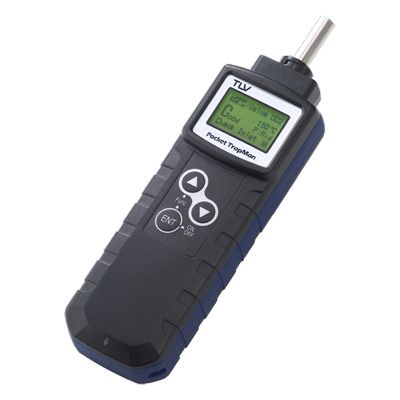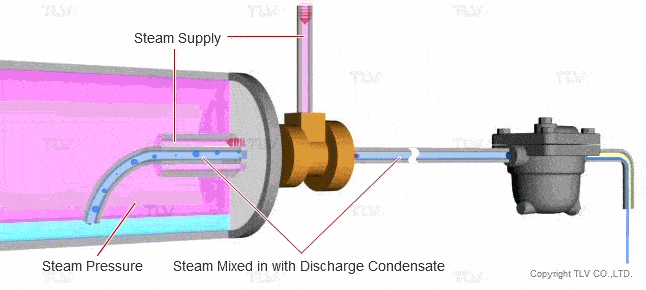Case Study: John Hargreaves Corrugator

Besseges VTF has a wealth of knowledge and experience in the steam process industry. This is thanks to a strong partnership with TLV a well-trained team and over 30 years of working on steam projects and providing our expertise and our quality products. It is this reliable knowledge and support that keeps our customers loyal to Besseges.
The Brief
One of these customers is John Hargreaves in Stalybridge, a corrugator who has been our client for 25 years. Hargreaves contacted Besseges asking us to find a solution to what was described as a “wet board issue” on the corrugator.
Identifying the Problem
Using an Infrared thermometer and the TLV Pocket Trapman, we ascertained that there were fluctuating temperatures across all the rolls and steam traps on the corrugator in the following areas:
- S90 Top & Bottom Flute Rolls
- S90 Pressure Roll
- S90 Liner Pre-Heater Roll
- VS90 Top & Bottom Flute Rolls
- VS90 Pressure Roll
- VS90 Liner Pre-Heater Roll
- Triple Stack Top, Middle & Bottom Rolls
- Glue Unit Preconditioner
We found that steam locking on the steam traps was responsible for the temperature fluctuations.
What is Steam Locking on a Moving Roll?
On most rolls that transfer heat via steam, process steam is fed into a hollow roll or can as some refer to them. The steam is fed into the roll via a rotary union at varying rates based on the heat output required. Within the roll to remove condense is a sparge pipe that is submerged in the said condense, differential pressure forces the condense into the sparge pipe and an exterior steam trap removes the condense, also based on differential pressure.
*Source TLV
If a roll, like many steam heat exchangers were stationary, then condense would be the only medium passing through the steam trap. Rolls as corrugators move at speed, which causes a mixture of steam and condense to enter the steam trap. As the piping configuration cannot be changed to prevent this, a modification of the steam trap is required to release the small amount of steam that prevents a steam trap from working correctly. Steam traps retain steam and remove condense and the fluctuation in the temperature on the roll is caused by condense being held in the process. The resolution of this is a bypass device fitted to a steam trap which creates a small leak path to bypass the trap.

Our Solution For John Hargreaves
Our original solution at Hargreaves Paper in Stalybridge was to modify their existing steam traps with a bypass enabling needle valve which acted on the TLV X-Element air eliminator. Using a TLV Pocket Trapman (ultrasound leak detector) the needle valves were set to achieve an optimum temperature at the steam traps.
Steam trap temperatures were increased from an average of sub-155°C to a range of temperatures from 170°C to 180°C at a normal working pressure of 11 bar. Our goal when setting these steam lock release valves on this site is a minimum of 170°C at the steam trap and to maintain this. We visit the site each month to reset the needle valves, which can be affected by the vibration of the corrugator.
The Result
Ultimately our goal was to reduce or eradicate the problem of wet board, by providing consistent temperature on the rolls. The first steam lock release valves were fitted in 2019 and since then the corrugator at John Hargreaves has run more efficiently, with roll temperatures maintained at consistent levels throughout the last six years. We were successful in reducing the problem of wet board and have worked more closely with this business since introducing these changes to their process.
In addition, as TLV released a new steam lock release trap, the J3SX-RV, we trialled a 3/4” J3SX-RV-14 on this site. This model has a steam lock release valve and chamber independent of the air release feature. This proved successful and we have already provided 4 of these to replace older SG iron TLV J5X steam traps. The J3SX-RV lock release steam trap is less affected by vibration and has been more consistent at maintaining higher temperatures.
Feedback From The Client
“Due to the fact we have a short double backer there is a requirement for a higher temperature at the faces, that being on S90, VS90 and the triple stack. Stephen Tate from Besseges suggested a solution involving TLV steam trap technology. After testing the new steam traps, they were fitted across this entire process area. Since this was completed, we have achieved higher temperatures which exceeded our expectations which has led to faster operation and an increase in production.”
Vinny Gibbon – Chief Engineer, John Hargreaves
Besseges VTF would like to thank John Hargreaves for their valuable participation in this case study.
Register For An Account
Save & manage your details, access invoices, and enjoy a quicker shopping experience!

